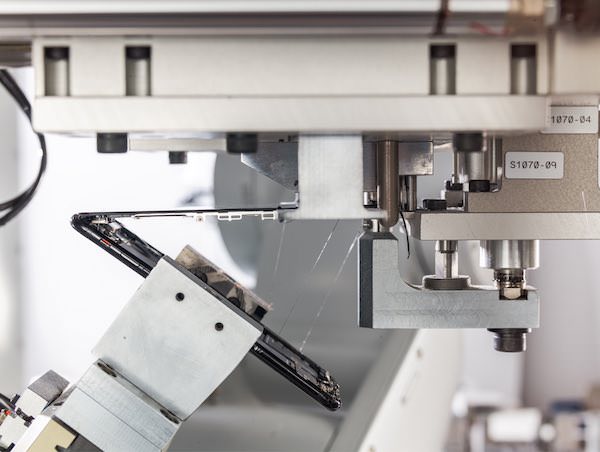
[Image above] Credit: Apple
Our disposable, tech-focused culture annually generates millions of tons of electronic waste. And estimates indicate that only about 15%–20% of electronic devices are recycled after being tossed aside for the latest model.
That means the vast majority of valuable materials that make up our electronic devices—materials that often have to be painstakingly mined, extracted, processed, and refined, usually with high environmental and human health costs—are one-time use. We treat these valuable raw materials as disposable commodities.
With each device that is manufactured, those raw materials completely restart their long journey being mined out of the ground, extracted, processed, and manufactured into components.
What a waste.
In an effort to increase its sustainability and materials recycling efforts, Apple just unveiled a new robotic iPhone disassembly system, Daisy, that can separate and recover valuable materials from used iPhone devices in a matter of minutes.

Credit: Apple
“It doesn’t make sense to recycle a phone the same way we recycle cars or a toaster,” Lisa P. Jackson, Apple’s vice president of environment, policy, and social initiative and former EPA Administrator, says in a Popular Science story. “The glass is crushed, the aluminum is sold into the scrap aluminum market, and the rest is shredded into this pile of plastics and metals. It has some value, but not a particularly high level. It’s not going back into an electronic.”
Conventional methods to recycle devices often simply shred the old electronics, yielding material that’s not high-quality enough to be used in other devices. And those methods particularly don’t allow for recovery of valuable rare-earth elements. The devices are recycled, but the materials must find new uses.
That’s not the case with Daisy. This 30-foot-long robot has five robotic arms that methodically break down discarded iPhone devices into their component parts, allowing recovery of high-quality materials, at a rate of up to 200 devices per hour—or ~3.33 phones per minute.
The disassembly robot represents an improvement over Apple’s previous iPhone disassembly robot, Liam, which was introduced in 2016. Apple learned from what worked and didn’t work with Liam, and even cannibalized some of Liam’s parts to build Daisy.
Once an iPhone gets picked up and assessed by Daisy, the robot uses a series of steps to pry apart cover glass, knock off the battery, and punch out the screws holding the assembly together.

Credit: Apple

Credit: Apple
Daisy uses those five robotic arms to pound, clip, grip, shake, and twist 9 different iPhone models, freeing their individual components from one another and neatly sorting them based on their component materials.
Those separated piles can then be recycled into high-quality materials that can be fashioned into new devices. So in addition to minimizing electronic waste, Daisy actually helps create new materials supply streams. Beyond environmental sustainability, those streams also help lower material costs and consumption and bypass raw material market fluctuations and supply uncertainties.
Read more about Apple’s efforts in Popular Science’s exclusive first look at Daisy.
Did you find this article interesting? Subscribe to the Ceramic Tech Today newsletter to continue to read more articles about the latest news in the ceramic and glass industry! Visit this link to get started.
